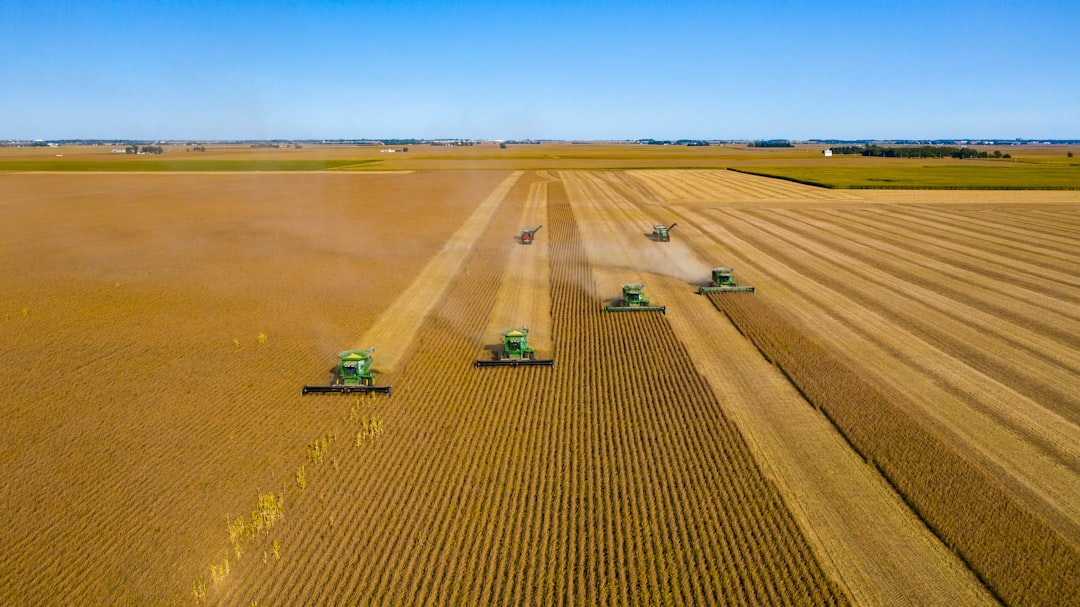The Soybean Squeeze Hits Home (image credits: Unsplash)
Across the rolling fields of the Midwest, golden pods hang heavy on the vines, but this harvest feels heavier than most, shadowed by the weight of distant trade battles.
The Soybean Squeeze Hits Home
Imagine planting acres of soybeans, only to watch your biggest buyer vanish overnight—that’s the stark reality for many American farmers right now. In 2025, China’s decision to halt all purchases of US soybeans has sent shockwaves through rural communities, turning what was once a reliable cash crop into a symbol of economic strain.
This isn’t just a blip; it’s a direct fallout from escalating tariffs. US exports to China, which used to account for over half of soybean sales, have plummeted to zero this year. Farmers are staring at unsold stockpiles, forcing tough choices like selling at a loss or letting fields go fallow.
The pain is immediate and personal. One Midwest grower shared how his operation, built over decades, now faces bankruptcy without that overseas market. It’s a reminder that trade policies ripple far beyond Washington boardrooms.
Tracing the Tariff Trail
Trump’s aggressive trade agenda kicked off with hefty tariffs on Chinese goods, aimed at leveling the playing field. But Beijing fired back, slapping retaliatory duties on US agriculture, with soybeans caught right in the crossfire. By mid-2025, those countermeasures had escalated, making American beans too expensive for Chinese importers.
Now, the numbers tell a grim story. Soybean exports to China dropped 75% compared to last year, wiping out billions in revenue. Overall ag exports to the region are down over 50% in the first half of the year alone, hitting not just soy but corn and pork too.
It’s a cycle that’s hard to break. As prices dip, production costs—already up due to labor shortages from other policies—climb higher, squeezing margins thinner than ever.
China’s Pivot to New Partners
While US farmers scramble, countries like Argentina and Brazil are stepping in to fill the void. China, the world’s top soybean consumer, has ramped up buys from these South American powerhouses, boosting their economies and locking in long-term deals.
This shift isn’t new, but Trump’s policies have accelerated it. Argentine farmers, for instance, are reaping record harvests, with exports surging as the Trump administration even signals economic aid to Buenos Aires—ironic, given the hit to US producers.
The result? A realignment in global trade that’s tough to reverse. Brazil’s output is projected to hit new highs this season, while US soybeans pile up in silos, waiting for a market that might not return anytime soon.
Farmers on the Front Lines
Step into any diner in Iowa or Illinois, and you’ll hear the frustration bubbling over. Soybean-dependent farms, a backbone of the heartland, are at risk of closure—estimates suggest up to 50,000 could shutter by next year if trends continue.
Labor issues compound the mess. Deportation policies have disrupted seasonal workforces, jacking up costs by 15-20%. Combine that with lower yields from erratic weather, and real incomes for most producers are expected to drop sharply.
Yet, there’s resilience here too. Some farmers are diversifying into cover crops or local markets, but it’s a band-aid on a deeper wound. The human cost—lost legacies, family stress—is what keeps folks up at night.
Broader Ripples in the Economy
This isn’t isolated to soy; it’s a warning for the entire ag sector. With China accounting for such a huge slice of exports, the freeze has dragged down related industries, from trucking to equipment sales.
Economists point to a $2.6 billion hit just from lost soybean deals so far this year. And as global prices fluctuate, the uncertainty makes planning a nightmare—will tariffs ease, or will the standoff drag on?
Politically, it’s heating up too. As midterms loom, these battleground states could sway on how voters feel about policies that promise big wins but deliver farmyard losses.
Looking Ahead: Paths to Recovery?
Trump’s team talks up negotiations, hinting at talks with Xi Jinping to restart flows. Recent signals even lifted soybean prices briefly on the Chicago exchange, offering a glimmer of hope. But farmers aren’t holding their breath—past trade wars left scars that haven’t fully healed.
Alternatives like biofuel mandates or new markets in Europe are on the table, but they can’t replace China’s scale overnight. For now, it’s about survival: subsidies help, but they don’t fix the root issue.
- Government aid packages to offset losses
- Exploring domestic uses like animal feed expansion
- International alliances to counter China’s dominance
- Tech innovations for higher yields and lower costs
- Policy tweaks to ease tariff escalations
Key Takeaways
- US soybean exports to China: Zero in 2025 so far, down from $12B in 2024.
- South America’s gain: Argentina and Brazil filling the gap with booming sales.
- Farmer impact: Rising costs and potential closures threaten rural America.
In the end, the soybean saga underscores a tough truth: bold trade moves can reshape the world, but they often exact a heavy toll on those tending the land. What steps do you think could turn this around for farmers? Share your thoughts in the comments.







